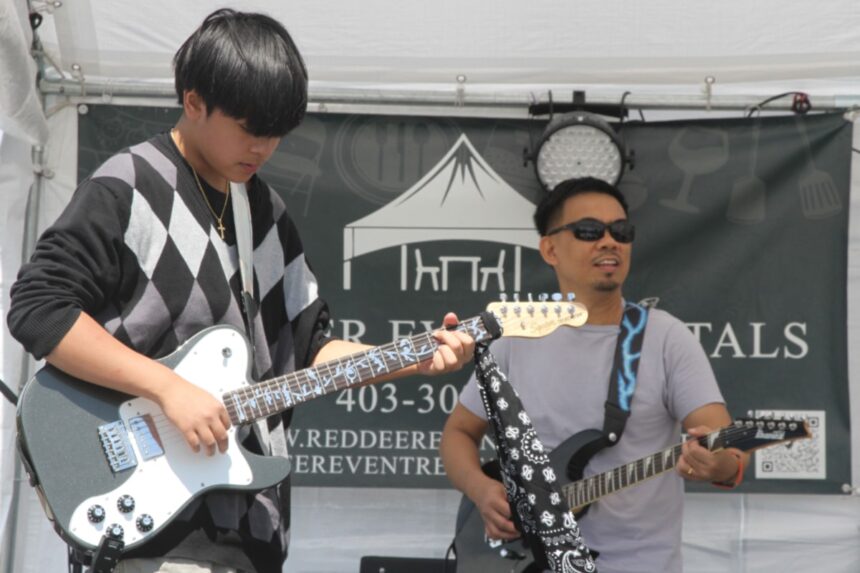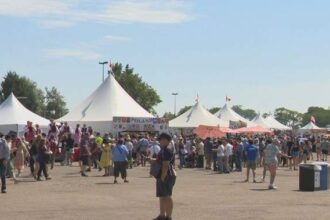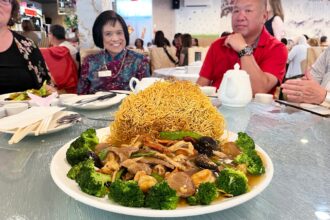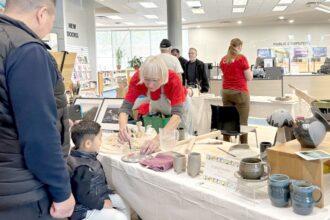The pulsating rhythms of traditional Filipino music filled the air as hundreds gathered at the Red Deer Filipino Street Festival this past weekend, transforming a corner of central Alberta into a vibrant celebration of Philippine culture. Now in its second year, the festival has already established itself as a cultural touchstone for the region’s growing Filipino community while offering a sensory gateway into Philippine traditions for curious locals.
As I wandered through the festival grounds, the intermingling aromas of sizzling lumpia, fragrant adobo, and sweet halo-halo created an invisible but powerful thread connecting attendees to the heart of Philippine culinary heritage. Food has always been the most accessible entry point into any culture, and the festival organizers clearly understand this universal truth. Vendors proudly displayed dishes that have been perfected through generations, each plate serving as both sustenance and storytelling.
“We wanted to create something that feels like home for our Filipino community, but also introduces our traditions to our neighbors,” explained Maria Santos, one of the festival organizers. “Last year we had about 300 attendees. This year, we’re seeing close to 700 people throughout the day.”
This remarkable growth speaks to something deeper happening in our cultural landscape. In an era where digital connections often supersede physical ones, there’s a palpable hunger for authentic communal experiences. The Filipino community in Red Deer has tapped into this desire beautifully, creating a space where cultural pride and curious exploration coexist.
The festival’s expanded music program particularly captured this spirit. Traditional folk dances performed in vibrant national costumes shared the stage with contemporary Filipino-Canadian artists, illustrating how immigrant cultures don’t simply preserve traditions but actively evolve them in their new homes. This cultural synthesis represents one of the most fascinating social trends of our increasingly globalized world—the way communities maintain cultural distinctiveness while simultaneously adapting and contributing to their adopted homeland’s cultural fabric.
Local officials have taken notice. “Events like these enrich our entire community,” noted Councillor Sarah Johnson, who attended the festival. “They reflect the changing demographic makeup of Red Deer and create opportunities for cultural exchange that benefit everyone.”
Indeed, the most striking aspect of the festival wasn’t just the attendance numbers but the diversity of the crowd itself. Young families, elderly couples, and groups of teenagers from various backgrounds moved between stalls, asking questions about unfamiliar dishes and attempting a few words of Tagalog with encouraging festival volunteers. These small interactions represent the quiet, transformative power of cultural festivals that often goes undiscussed in broader conversations about multiculturalism.
The festival also featured an expanded children’s area this year, with traditional Filipino games and crafts designed to engage younger generations with their heritage. For many Filipino-Canadian children born in Alberta, these activities provide a tangible connection to a homeland they may have never visited but that remains central to their identity.
As the evening progressed and lanterns began to illuminate the festival grounds, I spoke with several attendees about what brought them there. Their answers revealed the festival’s multifaceted appeal: community connection, culinary adventure, cultural education, and simply the universal joy of celebration.
The Red Deer Filipino Street Festival’s growth from 300 to 700 attendees in just one year might seem modest in raw numbers, but it represents something profound about our collective desire for authentic cultural experiences. In a world increasingly concerned with digital engagement metrics, perhaps we should pay more attention to these physical gatherings that nurture community bonds and cultural understanding.
As Red Deer’s cultural landscape continues to evolve, the Filipino Street Festival stands as a testament to how immigrant communities enrich their adopted cities. The question now isn’t whether such celebrations will continue to grow, but rather: how might other communities follow this example to create their own spaces for cultural celebration and exchange?














